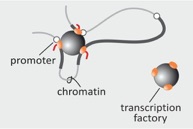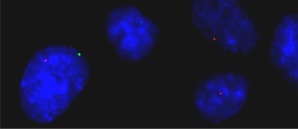Systems Biology of Chromatin

JRG VIII

We wish to uncover the rules governing gene expression in response to developmental and extra-cellular cues. Genome architecture is thought to be a major determinant in this. What we would like to understand is how chromatin folds to accommodate responses to such cues in all four dimensions, i.e. in 3D space and time. In the end, we anticipate these rules to be general ones, which - once deciphered - will allow us to predict how a cell might respond in disease, signaling or in the context of ageing.
An overview of our research
Latest news:
‘Our paper on HMGB2 topological effects in senescence is now out in the latest Molecular Cell issue! Spread the word!’
‘The lab just received a generous 4-year grant as part of the amazing TRR81 network!’
‘Akis giving a talk a TU Darmstadt on 24.05’
What we do (for a non-scientific audience)
The efforts of the Human Genome Project have revealed the sequence of the billions of bases in our chromosomes. However, how these very long molecules fold in 3D space, and how this folding allows our genes to be expressed at the right time and place, still eludes us. We are currently trying to generate 3D maps of the human genome to identify gene neighborhoods. This should allow us to understand the rules that govern gene function, and to predict how a cell might respond in disease or ageing.

Pictures (top left to right): RNA FISH (from Papantonis et al., PLoS Biol, 2010); illustration of transcription factories (from Larkin et al., NAR, 2013); the CMMC building (by A.P.).


Funding:






